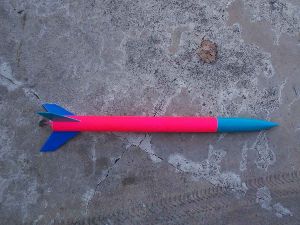
Brief:
This rocket, which as yet had no name when I was asked to test it, is part of an education series designated to teach rocketry. It is a simple kit but achieves its aims well, providing an introduction to such topics as baffles, motor selection, changing CP/CG relationships, etc.
Construction:
Construction begins with the building of the 24mm motor mount. A slit is made to accommodate the engine hook and the hook is inserted and secured with tape. A thrust ring is inserted in the forward end of the motor mount and seated against the engine hook. Mine was a bit loose but nothing out of the ordinary. The glue will easily keep it in place. Having the glue still wet on the thrust ring was no impediment to mounting the centering rings. They easily slid into place and were glued and filleted with yellow glue.
The motor mount was given a few hours to dry and then test fit into the body tube. A little sanding was needed on both rings and then the motor mount was secured and glued into place with the aft centering ring flush with the end of the tube.
I used a fin marking template generated in VCP but am assured that the production model of the kit will include a similar wrap. With the wrap, it was an easy matter to transfer the correct lines to the body tube. The fins were high quality balsa which almost fell out of the sheets. I gave a gentle rounding to the leading, trailing, and outside edges with sandpaper. Its not a real airfoil but done mostly (in my case) for cosmetic reasons.
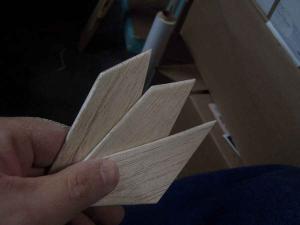
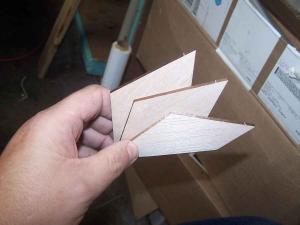
The fins were applied using a double glue joint and yellow glue. They went on flush with the aft end of the BT. When dried, fillets were applied to each of the joints.
The launch lug had its forward edge cut at an angle and was then glued with its back edge 6" from the back of the rocket.
The nosecone is something I really like about this rocket. It had a long and pleasing shape and was of high quality. It was also clever.
Instead of inserting the screw eye in the center, as is usually done, the instructions said to offset it one one side. This was done and the screw was set in yellow glue. With the screw eye in place to one side, I chose a drill bit that had the approximate diameter of the plastic wall anchor that came in the kit. I twisted it between my fingers to drill a hole long enough to accommodate the anchor and then squirted the hole with yellow glue. The anchor was then pushed in all the way and the washer and screw provided in the kit were threaded in. The purpose for this was to give an easy way to add washers as weight so that the rocketeer can experiment with CG/CP relationships. I think this is great!
The kit comes with a baffle that uses plywood for the baffle plates. A notch is cut into the edge of the top plate to accommodate a Kevlar thread looped through one of the holes and tied. Both sides of the baffle plate were given healthy fillets and the plate surfaces as well as the interior of the coupler tube were painted with glue to provide some protection. When the glue was dry, the baffle was glued into place about 6" down the BT.
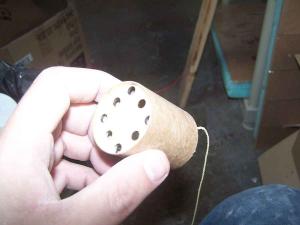
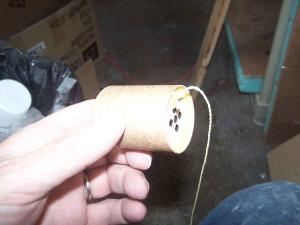
PROs: Well thought out, into to new areas of rocket construction for beginners, and logical and easy to build.
CONs: none.
Finishing:
Finishing began with sealing the balsa. The nose cone and the fins were coated with Elmer's Wood Filler and allowed to dry.
When the filler had a day to dry, it was sanded down. The balsa was in good shape so needed little extra. The sanded rocket was put in the spray booth and primed with Kilz. A few hours later, it received a second coat.
I really had very little idea of how I wanted to paint this rocket. I'm not very creative that way. While looking around the shop, I saw a can of fluorescent pink that had never been opened. It was sitting next to a couple of others which gave me an idea. I sanded down the Kilz and then gave it a coat of pink. It would need another.
In fact, it took a total of three coats of the fluorescent pink to get decent coverage and you can still see a bit of a pencil line, but I was finally pleased with the resulting color.
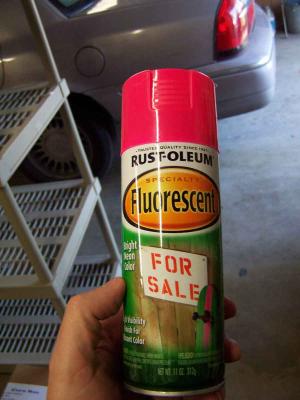
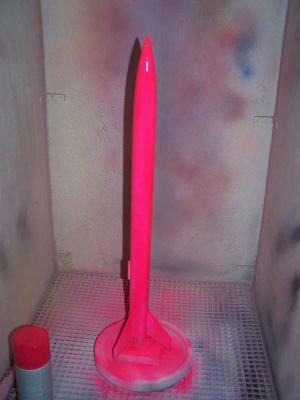
To contrast with the hot pink, I wanted to use a light blue for the nose cone. I also left a ring around the BT for about 3/8" below the NC. I also taped all but one fin so that that one will match the NC.
For some reason, I wanted to differentiate the other two fins. I decided on a dark/medium blue. The other two fins were uncovered and the base was masked to take the medium blue of the other 2 fins. The fins were thin sprayed with 2 coats.
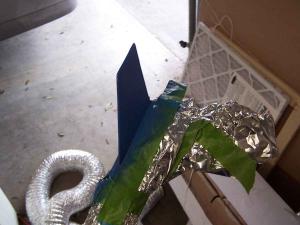
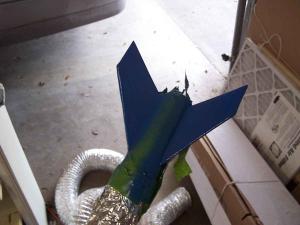
When the masking finally came off, I was inordinately pleased. I liked the looks of the rocket and it reminded me of a locally made candy from when I was a kid. I'm calling it the Kool Peppermint.
PROs: easy to finish.
CONs: a decal or something would be nice to keep it from looking generic.
Construction Rating: 5 out of 5
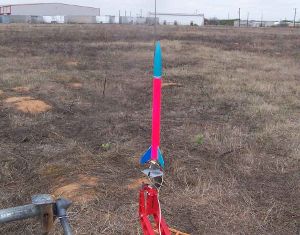
Flight:
I missed lots of flight opportunities with this rocket before actually taking it out. Something always seemed to go wrong. When I did finally get it out to the field, I decided to enter it into my club's informal D streamer duration contest. I loaded a pair of 4" streamers from Hartle Engineering and put in a D12-3. I set it on the pad and made sure the timers were ready. It took off and flew brilliantly. One of the streamers came off but it still turned in the respectable time of 39.6 seconds. A video of the flight can be seen here.
For my second flight, I replaced the second streamer and found somebody who was willing to sell me a D12-5. The rocket again flew beautifully and clocked an almost identical time. Having the extra streamer did no good. A video of the second flight can be seen here.
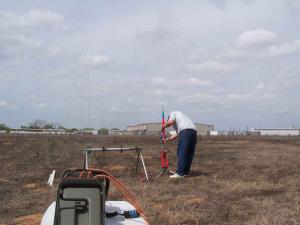
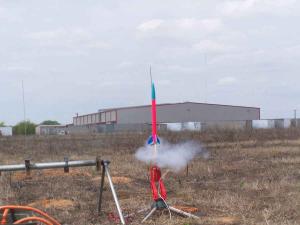
I got off one more flight, this one again on a D12-5. This time I borrowed Dave Hein's streamer and that added 5 seconds to the time and put me in second place, except that we agreed that this flight would not officially count. It was a good flight but unfortunately the Kestrel popped a fin on a hard landing.
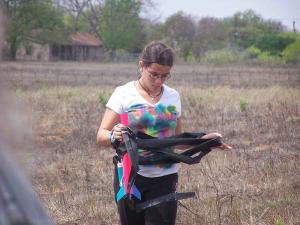
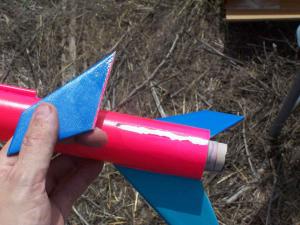
Recovery:
This rocket is intended to be used with a parachute but performed well with a streamer. It probably should use the chute, especially in light of my broken fin, but I am very happy with its performance.
Flight Rating: 5 out of 5
Summary:
This is a great learning rocket that's not very difficult to build. I can easily see it being a great classroom rocket as well. It might be a 3FNC but its a very well designed one.
Overall Rating: 5 out of 5



























